I love to read. By God’s grace I am a pretty fast reader; I usually read a couple books each week. I find it helpful to summarize my thoughts on each book and I offer those thoughts in the hope that you will be encouraged to either read or pass over the given title.
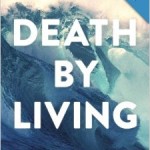 Death By Living: Life is Meant to Be Spent by ND Wilson. Wilson didn’t disappoint in this long awaited follow-up to his much acclaimed Notes from a Tilt-a-Whirl. He says, “This book hangs on a creature’s narrative motion through time (past, present, and future) and is (slightly) more linear [than Notes].” I am not so sure I would call it linear, but it is a collection of marvelous meditations on life, death, and everything in between. I was brought to tears multiple times through laughter, simple reflections on life, and the sadness of a loved one crossing over. As the book concluded a renewed vigor to live this vapor in the wind with passion and purpose thudded on my soul. Undoubtedly one of the best books I have read all year.
Death By Living: Life is Meant to Be Spent by ND Wilson. Wilson didn’t disappoint in this long awaited follow-up to his much acclaimed Notes from a Tilt-a-Whirl. He says, “This book hangs on a creature’s narrative motion through time (past, present, and future) and is (slightly) more linear [than Notes].” I am not so sure I would call it linear, but it is a collection of marvelous meditations on life, death, and everything in between. I was brought to tears multiple times through laughter, simple reflections on life, and the sadness of a loved one crossing over. As the book concluded a renewed vigor to live this vapor in the wind with passion and purpose thudded on my soul. Undoubtedly one of the best books I have read all year.
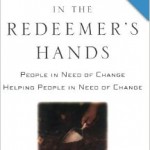 Instruments in the Redeemer’s Hands: People in Need of Change Helping People in Need of Change by Paul David Tripp. I had thumbed through this book several times, but never got around to reading it until last week. Tripp’s soul-care manifesto is a one stop shop of biblical wisdom for pastors, counselors, and Christians in general. The book can be broken up into two parts with the first section detailing the theology foundation for helping people change and the second section showing a practical method to employ. His framework of “Love, Know, Speak, Do” is mighty helpful. The book is longer than it needs to be (360 pages), which is very Tripp-like, but I would still recommend every pastor read it.
Instruments in the Redeemer’s Hands: People in Need of Change Helping People in Need of Change by Paul David Tripp. I had thumbed through this book several times, but never got around to reading it until last week. Tripp’s soul-care manifesto is a one stop shop of biblical wisdom for pastors, counselors, and Christians in general. The book can be broken up into two parts with the first section detailing the theology foundation for helping people change and the second section showing a practical method to employ. His framework of “Love, Know, Speak, Do” is mighty helpful. The book is longer than it needs to be (360 pages), which is very Tripp-like, but I would still recommend every pastor read it.
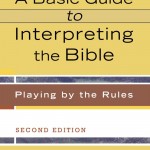 A Basic Guide to Interpreting the Bible: Playing by the Rules by Robert Stein. I loved the whimsically serious nature with which Stein teaches basic principles for interpreting the Bible in this book. When he teaches on interpreting narratives he does so under the heading of “The Game of Stories”; when it’s poetry he calls it “The Game of Rhythm.” Each section is long enough to cover the necessary bases, but not so long to tempt the reader’s interest. All in all, this is a useful introduction to hermeneutics. It may have been the one I’d recommend if it wasn’t for . . .
A Basic Guide to Interpreting the Bible: Playing by the Rules by Robert Stein. I loved the whimsically serious nature with which Stein teaches basic principles for interpreting the Bible in this book. When he teaches on interpreting narratives he does so under the heading of “The Game of Stories”; when it’s poetry he calls it “The Game of Rhythm.” Each section is long enough to cover the necessary bases, but not so long to tempt the reader’s interest. All in all, this is a useful introduction to hermeneutics. It may have been the one I’d recommend if it wasn’t for . . .
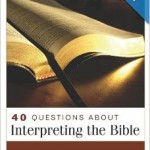 40 Questions About Interpreting the Bible by Robert Plummer. I love Kregel’s “40 Questions About Series” because each entry is accessibly exhaustive – 40 questions on a given topic is usually sufficient to his all the high points. Plummer’s entry on hermeneutics is my now go to volume to introduce Christians into the discipline. Plummer covers everything you would want him to with clarity and care. Highly recommended!
40 Questions About Interpreting the Bible by Robert Plummer. I love Kregel’s “40 Questions About Series” because each entry is accessibly exhaustive – 40 questions on a given topic is usually sufficient to his all the high points. Plummer’s entry on hermeneutics is my now go to volume to introduce Christians into the discipline. Plummer covers everything you would want him to with clarity and care. Highly recommended!
 The Hunt for Red October by Tom Clancy. My dad has tried to get me to read Clancy for quite some time, so I finally dove in with the first Jack Ryan novel. Maybe it was because my dad’s rave reviews created unrealistic expectations or maybe it was because I already knew the ending from watching the movie; whatever the reason, I was quite disappointed. The book is bloated with technical naval jargon and Clancy jumps around so much with the narrative that character development didn’t seem to be on his radar. I did enjoy how the Cold War’s ideologies were appropriately collided throughout the novel. Ryan gets surprisingly little spot time in the book, so I can’t help but think that if Clancy didn’t bounce around so much and focused more solely on Ryan and Ramius (the Soviet protagonist) the narrative would have been tighter. I am not disappointed enough to give up on Clancy, I will just stroll in to the next book with lower expectations.
The Hunt for Red October by Tom Clancy. My dad has tried to get me to read Clancy for quite some time, so I finally dove in with the first Jack Ryan novel. Maybe it was because my dad’s rave reviews created unrealistic expectations or maybe it was because I already knew the ending from watching the movie; whatever the reason, I was quite disappointed. The book is bloated with technical naval jargon and Clancy jumps around so much with the narrative that character development didn’t seem to be on his radar. I did enjoy how the Cold War’s ideologies were appropriately collided throughout the novel. Ryan gets surprisingly little spot time in the book, so I can’t help but think that if Clancy didn’t bounce around so much and focused more solely on Ryan and Ramius (the Soviet protagonist) the narrative would have been tighter. I am not disappointed enough to give up on Clancy, I will just stroll in to the next book with lower expectations.
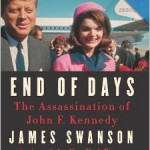 End of Days: The Assassination of John F. Kennedy by James Swanson. Swanson’s first two books, bestsellers I might add, focused on the chase for a presidential assassin and the presidential funeral pageant that followed. So I guess he is uniquely equipped to writ about JFK’s assassination and everything it includes. And I am glad he did. Swanson is one of those rare historians who can write history with the gripping prose of expert storytellers and this trait is on full display in this latest work. I was so absorbed with the interwoven fates of Kennedy and Oswald that I read the entire book in two sittings. Conspiracy theorists will surely want to excoriate Swanson’s simple conclusion that “perhaps the reason (for Oswald assassinating the president) is much simpler and more fundamental and lies beyond rational human understanding: Lee Harvey Oswald was evil” (297). The book abounds with fascinating insights (such as how Jackie started the Camelot Court mythology) and I think would satisfy the JFK expert or novice.
End of Days: The Assassination of John F. Kennedy by James Swanson. Swanson’s first two books, bestsellers I might add, focused on the chase for a presidential assassin and the presidential funeral pageant that followed. So I guess he is uniquely equipped to writ about JFK’s assassination and everything it includes. And I am glad he did. Swanson is one of those rare historians who can write history with the gripping prose of expert storytellers and this trait is on full display in this latest work. I was so absorbed with the interwoven fates of Kennedy and Oswald that I read the entire book in two sittings. Conspiracy theorists will surely want to excoriate Swanson’s simple conclusion that “perhaps the reason (for Oswald assassinating the president) is much simpler and more fundamental and lies beyond rational human understanding: Lee Harvey Oswald was evil” (297). The book abounds with fascinating insights (such as how Jackie started the Camelot Court mythology) and I think would satisfy the JFK expert or novice.
